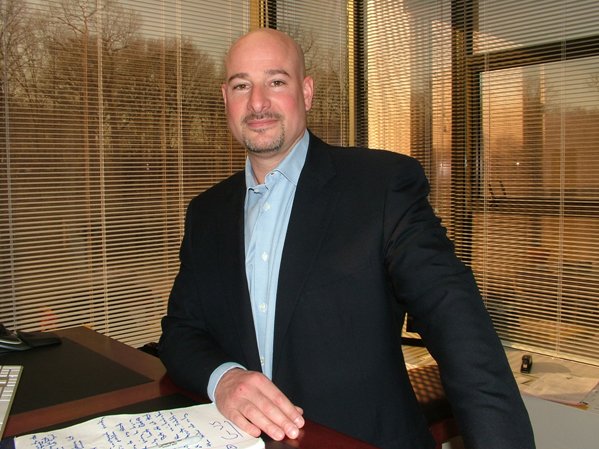As river dredging begins this month in an environmental cleanup at the former General Motors Corp. automotive plant in Sleepy Hollow, a municipal neighbor looks to dredge up its five-year-old legal fight over the size and impact of Lighthouse Landing, a sweeping redevelopment project at the GM site approved by Sleepy Hollow officials.
Recent legal moves by the village of Tarrytown have angered some Sleepy Hollow officials, whose attorney claimed Tarrytown is pursuing a strategy of legal delays to thwart the project while seeking a share of the $11.5 million that GM agreed to give Sleepy Hollow for measures to mitigate the project”™s impact on the communities.
Tarrytown Mayor Drew Fixell, though, said village officials hoped the legal action would lead a state judge or Sleepy Hollow officials to give “real assurances” that measures will be taken to relieve the “enormous traffic” created by the GM project.
A state Supreme Court judge last month rejected Tarrytown”™s petition to annul the Sleepy Hollow village board”™s approval of Lighthouse Landing, an estimated $800 million mixed-use development on the 96-acre property off Beekman Avenue vacated by the Detroit automaker in 1996. The court found that Sleepy Hollow complied with state law when it approved construction of 1,177 residential units, 35,000 square feet of office space, 135,000 square feet of retail, cinema and restaurant space and a 140-room hotel.
General Motors this year issued a request for proposals for the project, but has not yet named a developer. A GM spokeswoman last month said she could give no time frame for the company”™s awaited selection, which GM had agreed to make by last February.
The automaker presented its first redevelopment proposal to Sleepy Hollow officials in 2003. Tarrytown filed its initial court challenge in 2007, claiming its municipal neighbor did not take a “ hard look” at the project”™s impact on traffic and parking ”“ particularly in Tarrytown, where the Sleepy Hollow plan calls for more than 35 parking spaces to be eliminated on busy Broadway ”“ and did not thoroughly review alternative proposals. Tarrytown”™s petition was reactivated in 2011 after Sleepy Hollow trustees approved a scaled-back development plan that had withstood another legal challenge brought in 2007 by GM, which had sought to build an additional 73 residential units.
Sleepy Hollow Mayor Kenneth Wray hailed last month”™s court decision as opening the way for “a new and exciting chapter” of job creation, new businesses and new infrastructure in the village. But Tarrytown dampened its victorious neighbor”™s elation when it filed a notice of appeal with the state Appellate Division early this month, thereby protecting its right to seek to have the lower court decision overturned.
Tarrytown”™s attorney Steven M. Silverberg, of Silverberg Zalantis L.L.P. in Tarrytown, said the village also has filed a motion to renew and reargue the case in state Supreme Court where its previous petition was rejected. Silverberg declined to discuss details of the motion before Justice James W. Hulbert.
Fixell, in a statement read at a recent Tarrytown village board meeting, said the judge will be asked “to take another look at his decision in light of Sleepy Hollow”™s apparent refusal to honor or even discuss the commitments it had made earlier” regarding traffic mitigation.
Fixell said the removal of parking spaces on Broadway proposed by Sleepy Hollow “was unacceptable because it would undermine everything Tarrytown has been attempting to accomplish in its downtown” and would not ease the projected traffic congestion. Sleepy Hollow “has not offered to make a single change in the project or take any other actions that would address any of Tarrytown”™s concerns,” he said.
Attorney Joel H. Sachs, whose firm, Keane & Beane P.C. in White Plains, represents Sleepy Hollow, called Tarrytown”™s move to reopen the case “a frivolous motion. The whole purpose of the motion is to delay the development further.”
“They”™re playing the same game again,” said Sachs. “It”™s very unnecessary and it”™s very disturbing because were it not for this litigation, I think General Motors would have had a redeveloper for the property by now. There”™s a cloud hanging over the property now.”
Sachs said Sleepy Hollow officials suspect Tarrytown “is just pursuing this to see if they can get some of that money” that GM agreed to pay Sleepy Hollow for mitigation measures.
Sachs said the $11.5 million will be held in an escrow account by Sleepy Hollow and used to reimburse Tarrytown for traffic mitigation measures, “dollar by dollar for all expenses.”
“They”™re just looking to make a monetary grab of some of that $11.5 million,” he said of Tarrytown officials.
Sachs said Sleepy Hollow has asked the state appellate court to shorten the six-month period that Tarrytown has to finalize its appeal. If the court requires the completed appeal by the end of November as Sleepy Hollow requested, the case could be argued by early 2013.
“Hopefully we get a decision by next spring,” said Sachs. “Tarrytown”™s strategy is delay, delay, delay.”
Fixell called Tarrytown”™s legal maneuvers “a reasonable and responsible approach to protecting the legitimate interests of our residents.” Still, the village is “open to resolving our differences with Sleepy Hollow outside of the courtroom. Though the signs are not good, we remain hopeful that Sleepy Hollow will come to that conclusion as well.”





















